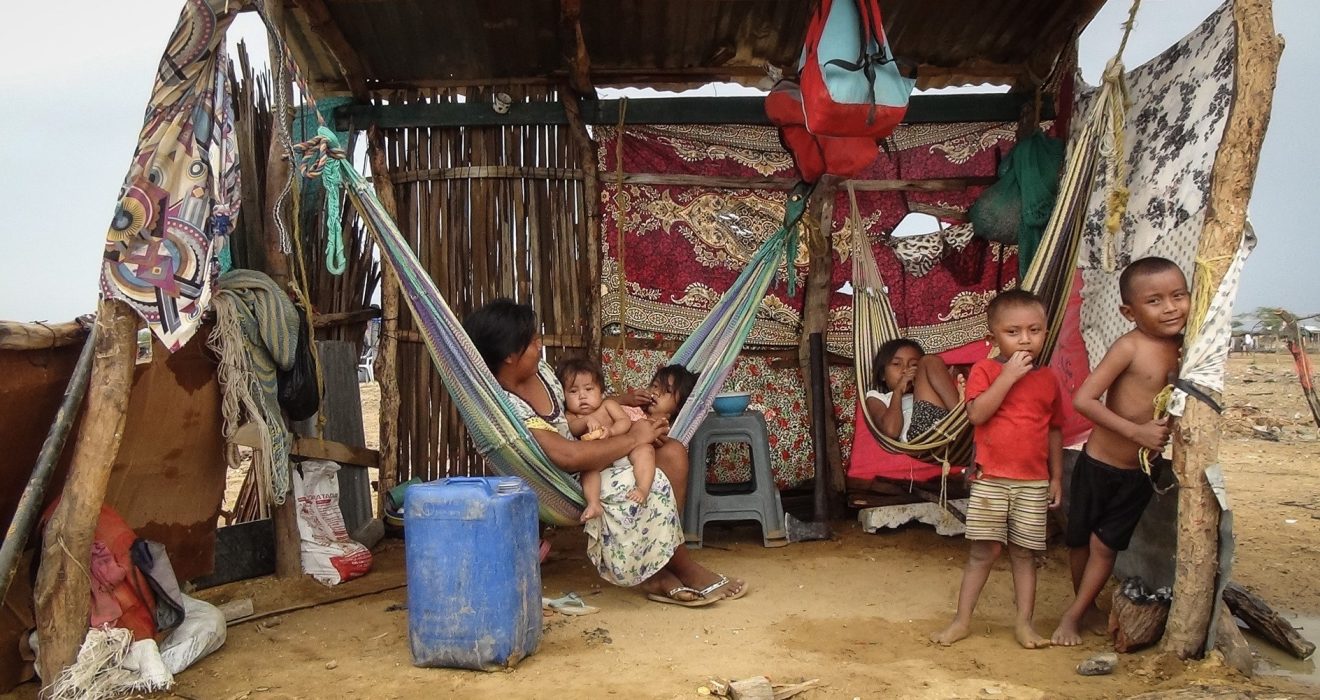In the arid landscapes of La Guajira, northern Colombia, the Wayuu tribe, deeply rooted in their ancestral connection to the land, face an unprecedented challenge – climate-driven drought. With every passing day, Indigenous children grapple with the harsh reality of empty water buckets, dried-up ponds, and an unrelenting sun that tests their resilience.
Save the Children, recognizing the importance of empowering these young minds to narrate their own tales of climate change, recently conducted a transformative workshop in a small Wayuu community. Award-winning photographer Angela Ponce guided a dozen children, providing them with simple film cameras to document their lives for a week. The resulting images, showcased on Children and Youth Day at the COP28 climate summit, offer a poignant glimpse into the challenges faced by the Wayuu youth.
The Thirst for Survival: Water Scarcity in La Guajira
In the arid expanse of La Guajira, the climate crisis translates primarily into a water crisis. Crippling droughts have led to historic lows in water levels, forcing the community to rely on ‘jaggery,’ a natural aquifer shared with livestock and dependent on rainwater. Drinking this water often results in waterborne diseases among children, underscoring the dire need for clean water.
Ismael, a 14-year-old from the community, captured the desperation in his photograph of a dried-up water pool. “The heat makes us thirsty, and the cattle pond is far away… sometimes it’s empty, and we need something to drink,” he lamented. The Wayuu children’s images consistently revolve around the theme of water, revealing their preoccupation with this vital resource made scarcer by rising global temperatures.
A Glimpse Through the Lens: Children’s Perspectives on Climate Change
The photography project not only allowed the Wayuu children to express their struggles but also taught them valuable skills. Using film cameras and experimenting with cyanotype printing, they captured the essence of their community’s plight. The resulting blue-hued artworks illustrated the desperate need for water while framing Indigenous plants crucial for survival.
For 16-year-old Iveth, the change in weather has disrupted traditional practices. “Before we had orchards, it rained, the plants grew. We didn’t water the plants; the rain did. Now there’s no rain, the weather has changed, so we can’t sow,” she explained. The Wayuu children’s photographs serve as a powerful reminder of the impact of climate change on the most vulnerable communities.
Preserving Cultural Roots Amidst the Climate Storm
In the face of relentless climate-driven challenges, the Wayuu youth stand as guardians of their cultural heritage, determined to shield it from the storm of adversity. Belkis, a wise 14-year-old member of the community, sheds light on the symbolic significance of the trupillo tree, an emblem of resilience that transcends generations. “It’s not just a tree; it’s a lifeline. Feeding our animals with trupillo is crucial; it ensures they survive in these harsh conditions,” she emphasizes, underscoring the deep interdependence between nature and Wayuu’s survival.
The lens of the Wayuu youth captures more than just the physical landscape. Through their photographs, we witness the sacred connection to essential plants like Yaichuaa and Apia leaves, woven intricately into the fabric of Wayuu culture. Each image becomes a testament to the profound relationship between these plants and the community’s ability to weather the storm – a visual narrative of cultural resilience in the face of crisis.
Urgent Call to Action: Navigating the Climate Crisis and Safeguarding Children’s Rights
As the Colombian government acknowledges the severity of the situation, declaring an economic and social emergency in La Guajira, the Wayuu community finds itself at the epicenter of a perfect storm. Already grappling with disproportionate impacts, the looming threat of a temperature surge exceeding 4 degrees by 2050 intensifies their struggles.
In response to this urgent plea for help, Save the Children is at the forefront of advocacy, urging higher-income countries, such as the UK, to step up their commitment to climate funding. Felipe Cortes, the head of advocacy at Save the Children in Colombia, delivers a poignant message: “The decisions made at COP28 will reverberate across the globe. Wayuu children, like their counterparts worldwide, stand at the crossroads of these decisions, and their rights and needs must be prioritized.”
The strength and resilience of the Wayuu youth, eloquently depicted through their photographic lens, beckon the global community to transcend passive observation and take meaningful action. The climate crisis, a formidable foe, disproportionately impacts the most vulnerable, and the voices of the Wayuu children echo through each image, pleading for more than just attention – they plea for tangible, urgent support.
In the wise words of Angela Ponce, whose guidance empowered the Wayuu children to share their stories, “Handing the Wayuu children their own cameras was more than a gesture; it was an act of empowerment. These photos unveil a powerful narrative of strength and resilience, urging all of us to become stewards of our planet and champions for those most deeply affected.” The urgency is palpable, and it is time for the world to rally behind the Wayuu community, safeguarding not only their cultural heritage but also the future of every child who calls La Guajira home.
Conclusion:
In the face of the climate storm, the Wayuu children’s voices, captured in each photograph, reverberate with a plea for attention, for preservation, and for a commitment to safeguarding their future. The urgent call is clear: it is time for the world to rally behind the Wayuu community, preserving not only their cultural heritage but also the very essence of childhood in La Guajira. The images speak, and it is our collective responsibility to listen, act, and ensure a future where the Wayuu youth can thrive despite the challenges that the climate crisis presents.

